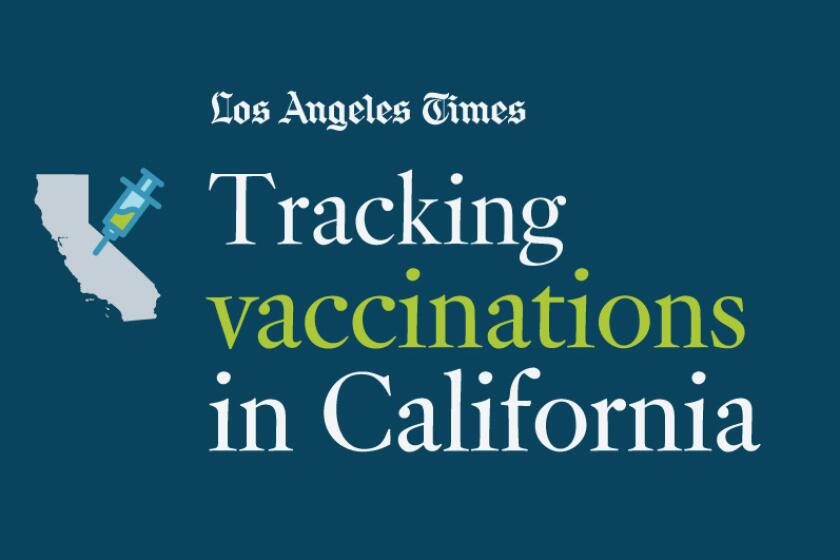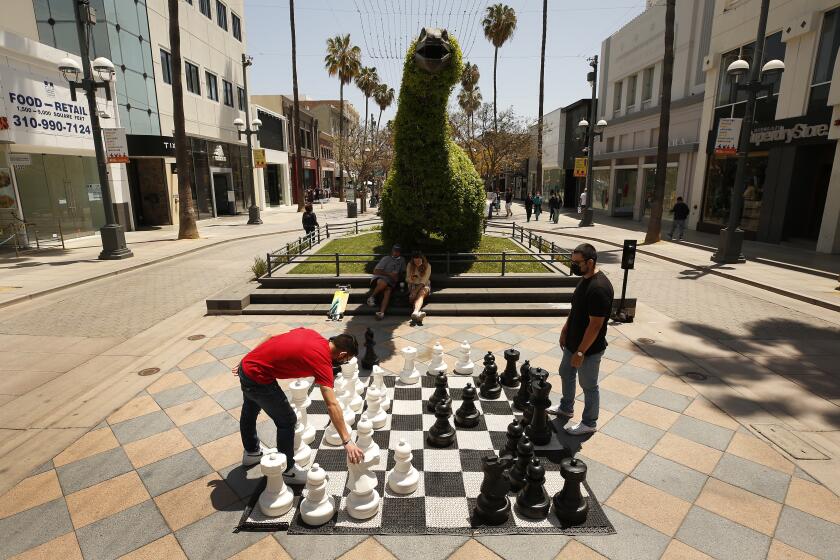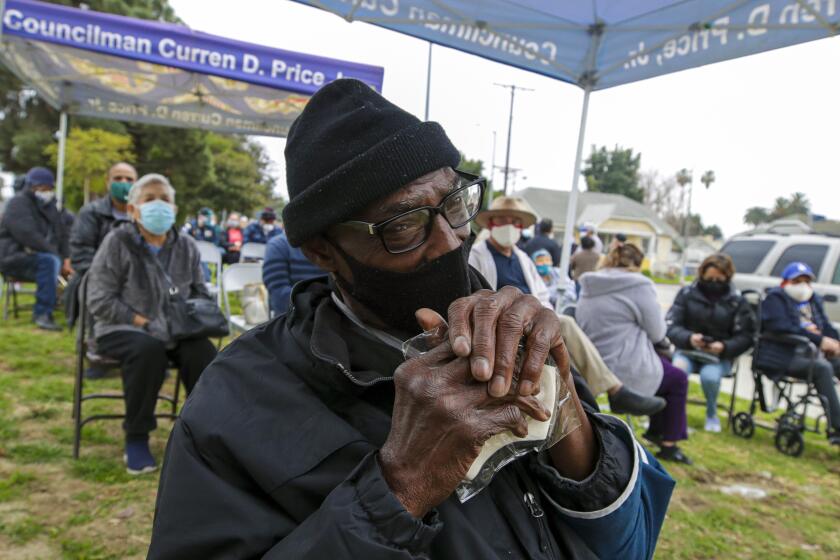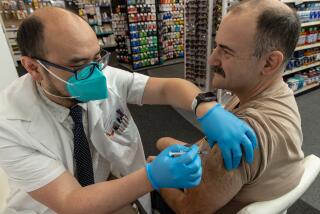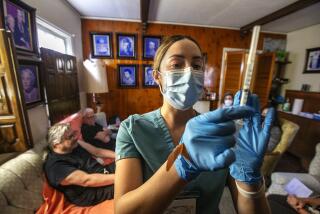Young Latino and Black people have the lowest rate of COVID-19 vaccination in L.A. County, new data show
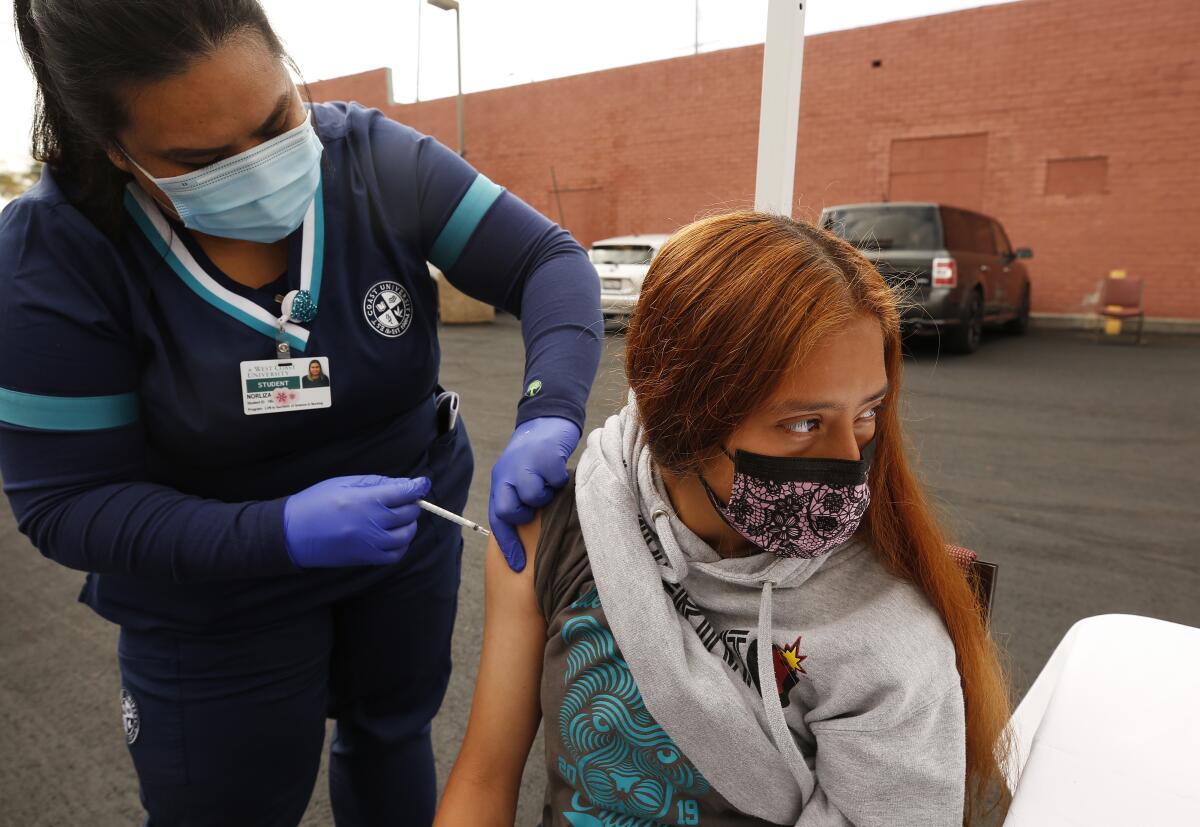
Young Latino and Black people have the lowest rate of COVID-19 vaccination among any other age, racial and ethnic group in Los Angeles County — and officials say they need to do more to make the shots easy and convenient for more people.
Only 18% of Black men and 20% of Black women between the ages of 16 and 29 have received at least one dose of the vaccine, county officials said Thursday. In the Latino community, the numbers are also low, with 24% of men and 31% of women between 16 and 29 receiving at least one dose.
By comparison, 43% of white men and 51% of white women within the same age group have received a dose, as have 57% of Asian American men and 65% of Asian American women, and 43% of Native American men and 53% of Native American women.
“We do need to work harder to ensure that there’s good information and easy access to vaccinations for our younger people,” L.A. County Public Health Director Barbara Ferrer said during a news briefing.
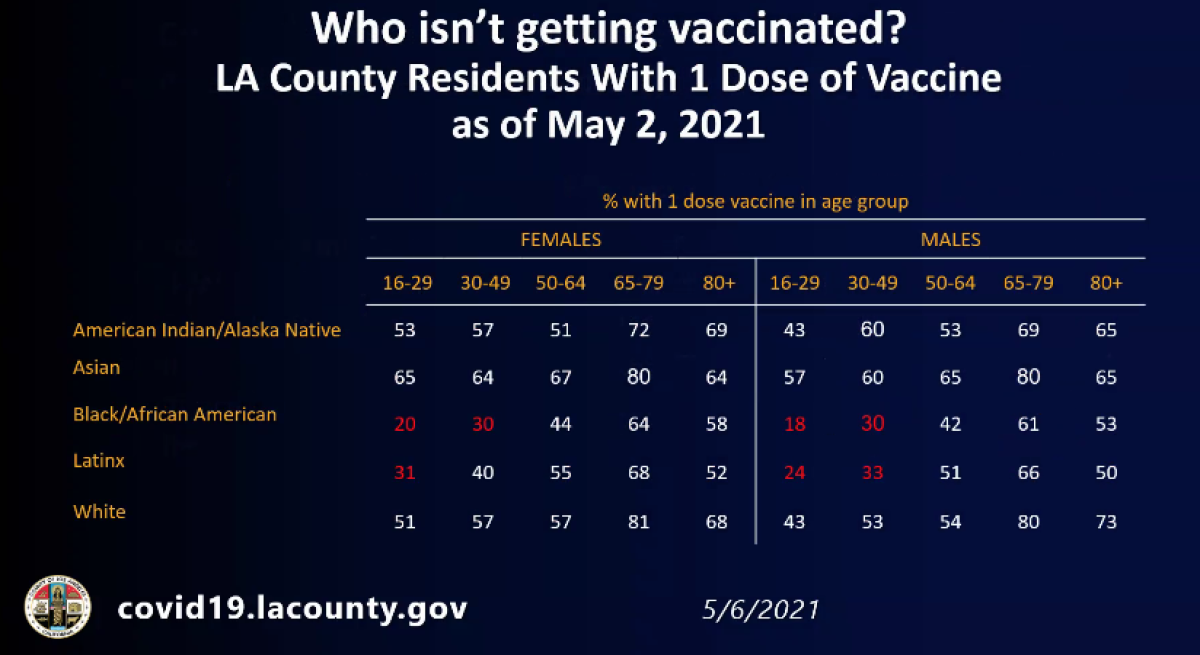
Young Latino and Black Californians, if infected with the novel coronavirus, have been more likely to die of COVID-19 than their white and Asian American peers. A Times analysis found that Latino Californians ages 18 to 34 represent an astonishing 71% of deaths in the age group, even though Latinos account for 45% of the state’s population in the age group.
Black Californians account for 9% of deaths statewide in the age group — disproportionately higher than the share of young adult Black Californians, who account for 6.5% of the population.
Experts say about most Americans will need to be vaccinated to bring the coronavirus pandemic under control. Track California’s progress toward that goal.
Efforts to improve COVID-19 vaccine equity in Los Angeles County are progressing. Health officials have begun a multi-pronged approach that includes offering to take residents to vaccination sites and giving medically disabled residents an option to request a vaccinator visit their home.
One bright spot in the latest vaccination numbers is shrinking disparities among seniors 65 and older.
From Feb. 9 to May 2 in L.A. County, the number of Black residents 65 and older who have received at least one dose of the vaccine saw a relative increase of 206%, officials said Thursday. Latino residents in the age group saw a relative increase of 160% during the same period.
But overall numbers for both groups remain lower than for others. In total, 61% of Black residents and 63% of Latino residents 65 and older have received one dose, compared to 70% of Native American residents, 76% of Asian American residents and 78% of white residents.
“We are so glad to see that the efforts of all of our partners and community leaders have improved vaccination rates in our hard-hit communities of color,” Ferrer said. “But as you can see, we still have work to do.”
L.A. County is in the yellow tier of the state’s COVID recovery plan, allowing for the broadest reopening of the economy since the pandemic began.
California has struggled to vaccinate lower-income and Latino and Black residents at rates as high as wealthier, white and Asian American residents. The disparity can be seen across the state, from L.A. County to the Bay Area, in counties both rural and urban.
Some farmworkers in Central California still have not received vaccinations even though they were prioritized months ago to receive the shots, said Ana Padilla, executive director of the UC Merced Community and Labor Center.
In some cases, farmworkers in the Salinas and San Joaquin valleys work seven days a week, spending 12 hours a day in the field and six hours on a bus getting to and from their homes.
“If this is their daily schedule, are they going to risk missing one day to get the vaccine when they could easily be replaced?” Padilla asked, noting that vaccination efforts have been geared more toward larger employers, while smaller labor contractors have received less attention.
“You have situations like these that don’t allow time for workers to get vaccinated,” she said, “unless efforts are made to get vaccines to employees where they live or work.”
Inmates in California correctional facilities also suffered from COVID-19 outbreaks during the worst months of the pandemic. L.A. County officials on Thursday announced that a manual review of data added 919 new deaths to the county’s correctional facilities numbers, bringing the total to 9,630 cases.
The cases primarily occurred between November 2020 and January 2021, during the autumn-and-winter surge, Ferrer said.
In L.A. County, Black and Latino residents continue to face barriers to getting the vaccine, despite efforts by county officials to expand access.
Vaccine hesitancy continues to be a concern as first-dose appointments plunge across the region. Orange County on Thursday said it would be closing all its mass vaccination sites on June 6 — which are located at the Anaheim Convention Center, O.C. Fair & Event Center, Soka University and Santa Ana College — after demand for first doses has dropped by more than 75% since the end of April.
By moving vaccine supply into smaller vaccine clinics, “we can be in more areas and reach more different segments of county residents,” Orange County Executive Officer Frank Kim said at a news briefing. “The time is right for us to go mobile and be more geographically diverse.”
The city of Los Angeles last week announced that its mass vaccination site at Dodger Stadium will cease operations at the end of May amid similarly slowing demand.
State epidemiologist Dr. Erica Pan took to Reddit on Thursday afternoon to address some of that hesitancy in an “Ask Me Anything” discussion on the online forum.
“I would recommend you protect yourself and the people you are close to that you care about, since we estimate 40-60% of people can be infected (and infect others) without any symptoms,” Pan wrote in one comment, adding: “We almost eliminated measles in the United States, and had for several years, but as soon as we started to have pockets of un-immunized people we saw outbreaks again.”
L.A. County has four mass vaccination sites, and they will remain open for the foreseeable future. Officials said they may want to continue using them to vaccinate people 12 to 15 years of age if the Pfizer vaccine is authorized for those adolescents as early as next week.
During the news briefing Thursday, Ferrer also addressed some of the most common questions and concerns the public health department is receiving about vaccines, saying that they will not affect fertility and that side effects from the vaccine are not contagious.
“All we can do is continue to answer your questions and provide good information, and ask you to talk to other people you know that have gotten vaccinated, and hear from them why they ended up making that choice,” she said.
Across California’s most populated counties, San Diego, San Francisco, Santa Clara and San Mateo counties have led the state in vaccination rates, with more than 60% of residents receiving at least one dose.
Coastal counties are among the highest rates of vaccination in Southern California, with L.A. County reporting 48% of residents receiving at least one dose; nearly 50% have received a shot in Orange, Ventura and Santa Barbara. Inland counties have struggled, with 41% of Imperial County residents, 39% of Riverside County residents and 35% of San Bernardino County residents having received at least one shot.
California counties with the worst rates of vaccination are largely in the Central Valley and the rural northern section of the state. For instance, just north of L.A. County, Kern County has reported just 33% of its residents at least partially vaccinated, and it’s worse in Kings County farther north, with just 26% of residents at least partially vaccinated.
More to Read
Sign up for Essential California
The most important California stories and recommendations in your inbox every morning.
You may occasionally receive promotional content from the Los Angeles Times.
